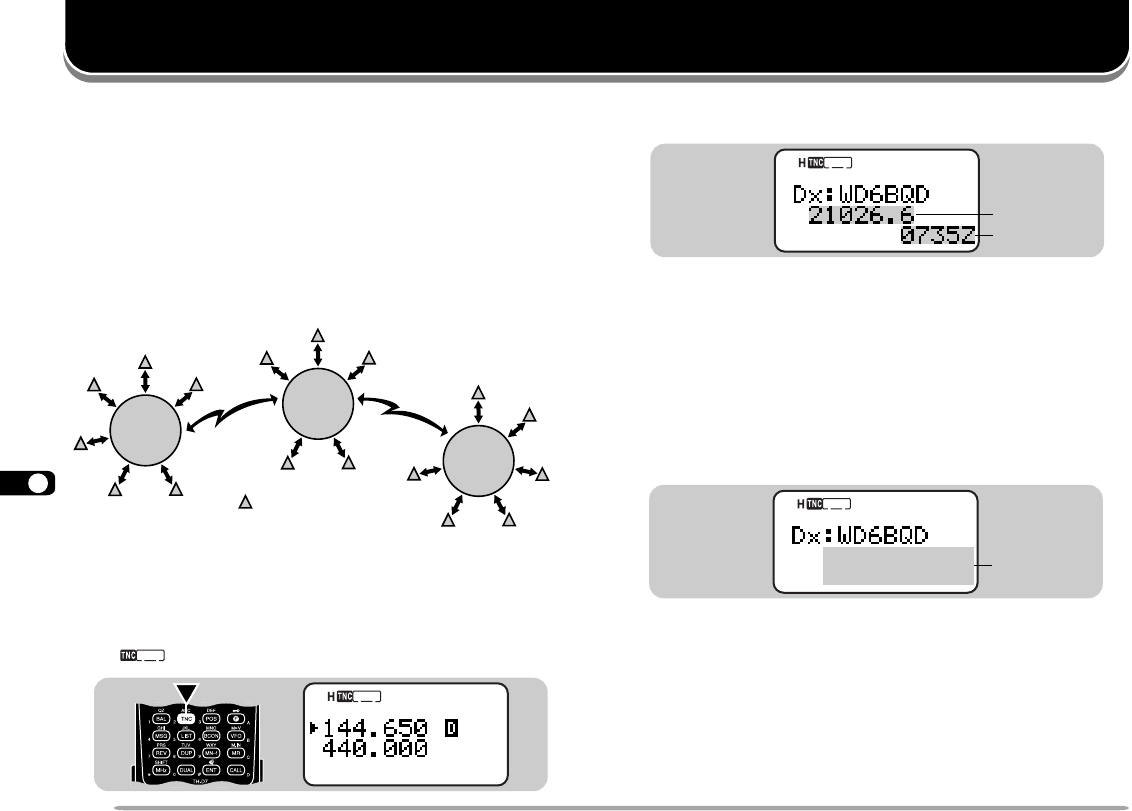
1
2
3
4
5
6
7
8
9
10
11
12
13
14
15
16
17
18
19
20
21
22
23
56
DX PACKETCLUSTERS MONITOR
STSTA
CONCON
9696
BCON
DUP
9
7
5
DX PacketClusters are networks which consist of nodes
and stations who are interested in DXing and contesting.
If one station finds a DX station on the air, he (or she)
sends a notice to his (or her) node. Then this node
passes the information to all its local stations besides
another node. This transceiver can display received DX
information and hold the latest information on up to 10
DX stations. Use this function to monitor the latest DX
information in your local area. You cannot send DX
information to a node, using the function.
1 Access Menu 1–4–1 (DATA BAND) to select band A or B.
2 Tune to the frequency of the target PacketCluster node.
3 Press [TNC] to switch ON the TNC.
•“ ” appears.
Node
Node
Node
Station
STSTA
CONCON
9696
BCON
DUP
9
7
5
Each time new DX cluster data is received, the frequency
display is interrupted to show information as below:
• The transceiver restores the frequency display after
approximately 10 seconds pass or when you press any key.
• When duplicate DX cluster data is received, the frequency
display is not interrupted. “dD” and a call sign will appear at
the bottom of the display.
To scroll through up to 10 sets of DX information, press
[LIST] twice, then press [UP]/ [DWN].
• Press [OK] to access an attached comment (20 characters
max.).
• Press [LIST] to restore the frequency display.
Note:
◆
The information is cleared when the transceiver power is turned OFF.
◆
This transceiver beeps each time it receives new or duplicate DX
cluster data. You may access Menu 1–5–3 (BEEP) to change this
setting. The default is “ALL”. See the table on page 63.
◆
Before tuning to a PacketCluster node, switch the APRS Beacon
function OFF {page 74}; otherwise, unintentional APRS packet
transmission will annoy PacketCluster nodes and stations.
STSTA
CONCON
9696
BCON
DUP
9
7
5
Comment
Time
Frequency


















